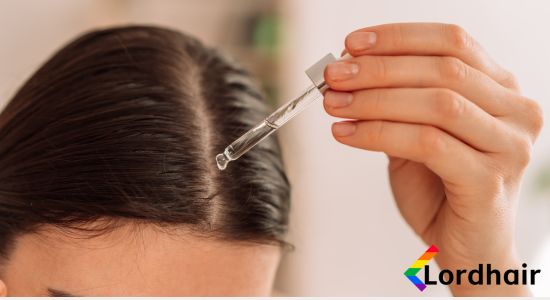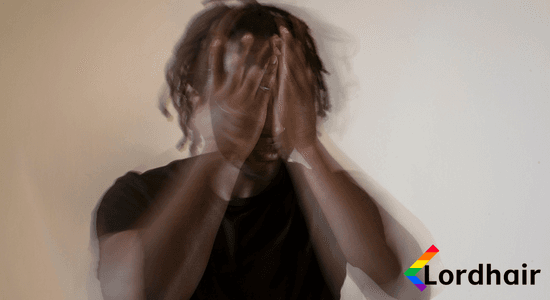Why Hair Loss Is a Complex Aspect of Transitioning
- Written by Ray Fernandez
- | Published Nov 23, 2023
- |
- 3 min read
 Listen to the full text
Listen to the full text
November is Transgender Awareness Month and this month provides an important platform to foster compassion, understanding, and support for the transgender community. As we commemorate this month, it is crucial to acknowledge not only the challenges faced by transgender individuals during the process of transitioning but also the added stressors they encounter. In a twist of synchronicity, Transgender Awareness Month coincided with Stress Awareness Week earlier in November—a timely opportunity to delve into the topic of hair loss and its significance for transgender individuals who face heightened stress levels.

Understanding the Stressors Faced by Transgender Individuals
Transitioning is a deeply personal journey that involves social, psychological, and physical changes. This multifaceted process often exposes transgender individuals to higher levels of stress due to the complex interplay of societal expectations, discrimination, and personal self-identification. It is worth noting that the causes of stress for transgender individuals are diverse and can include societal stigma, fear of rejection, legal obstacles, and difficulties navigating healthcare systems.
Hair holds immense symbolic and cultural significance. For transgender individuals, hair acts as an essential part of their overall identity alignment while transitioning. The presence or absence of hair can significantly impact one's self-esteem, confidence, and sense of belonging. Hair loss, unfortunately, is a common challenge faced by many transgender individuals as they undergo hormone replacement therapy (HRT) or other medical procedures to align their physical attributes with their gender identity.

Understanding the Impact of Stress on Hair Loss
The connection between stress and hair loss is well-documented, and this correlation is particularly relevant to transgender individuals during their transitioning process. Stress can manifest in several ways, and one of its physical effects can be hair loss. The body's response to stress triggers hormonal changes, including the production of cortisol, which can disrupt the normal functioning of hair follicles. Consequently, individuals may experience hair thinning, patchy hair loss, or even complete baldness.
For many transgender individuals, the experience of hair loss can be especially distressing. As they strive to align their physical appearance with their gender identity, hair plays a vital role. Hair loss can serve as a constant reminder of the challenges they face and can intensify feelings of dysphoria. The emotional toll accompanying hair loss can further exacerbate the stress already inherent in the transitioning process.
Transgender Jake introducing his solution to hair loss: A Lordhair hair system
Coping Strategies to Nurture Mental Wellbeing and Hair Health
Recognising the impact of stress and hair loss, it is essential to explore coping strategies that can promote mental wellbeing and hair health for transgender individuals during their transition. Here are a few suggestions:
Seek support: Engage with supportive communities, counselling services, and transgender support groups that offer a safe space for sharing experiences, emotions, and concerns.
Prioritise self-care: Implement self-care rituals such as meditation, exercise, and relaxation techniques to reduce stress levels. These practices can help promote a sense of calm and wellbeing.
Professional advice: Consult with healthcare professionals who specialise in transgender health. They can provide guidance on HRT options, supplements, or other treatments that can mitigate hair loss or promote hair regrowth.
Customised haircare: Explore tailored haircare options, such as hair toupee, hair extensions, or styling techniques, to enhance self-confidence and alleviate the emotional impact of hair loss.

- The hair loss experience of a transgender woman
- The history of wigs in LGBTQ culture
- What is the drag queen hommage to Madonna on her Celebration Tour?
What Can We Do to Help Transgender Individuals?
During Transgender Awareness Month, it is crucial to raise awareness not only about the challenges faced by transgender individuals but also about the intersection of stress and hair loss experienced during their transition. Understanding the unique struggles of transgender individuals and the impact of stress on their well-being is essential for fostering empathy, compassion, and support within our society. By offering support networks, promoting self-care, and seeking professional guidance, we can help mitigate the stressors faced by transgender individuals as they navigate their individual journeys to self-discovery and self-acceptance.
Ray is a guest contributor to our blogs with an extensive background in PR. Ray loves to discuss his own toupee (also known as men’s human hair wigs, hair systems, hair units, and men’s hairpieces)
journey by offering insights into wearing and styling a toupee wig as well as providing observations on the role of hair in sexual and gender identity from an LGBTQ+ perspective. Be sure to check out more of Ray’s Diversity content.



